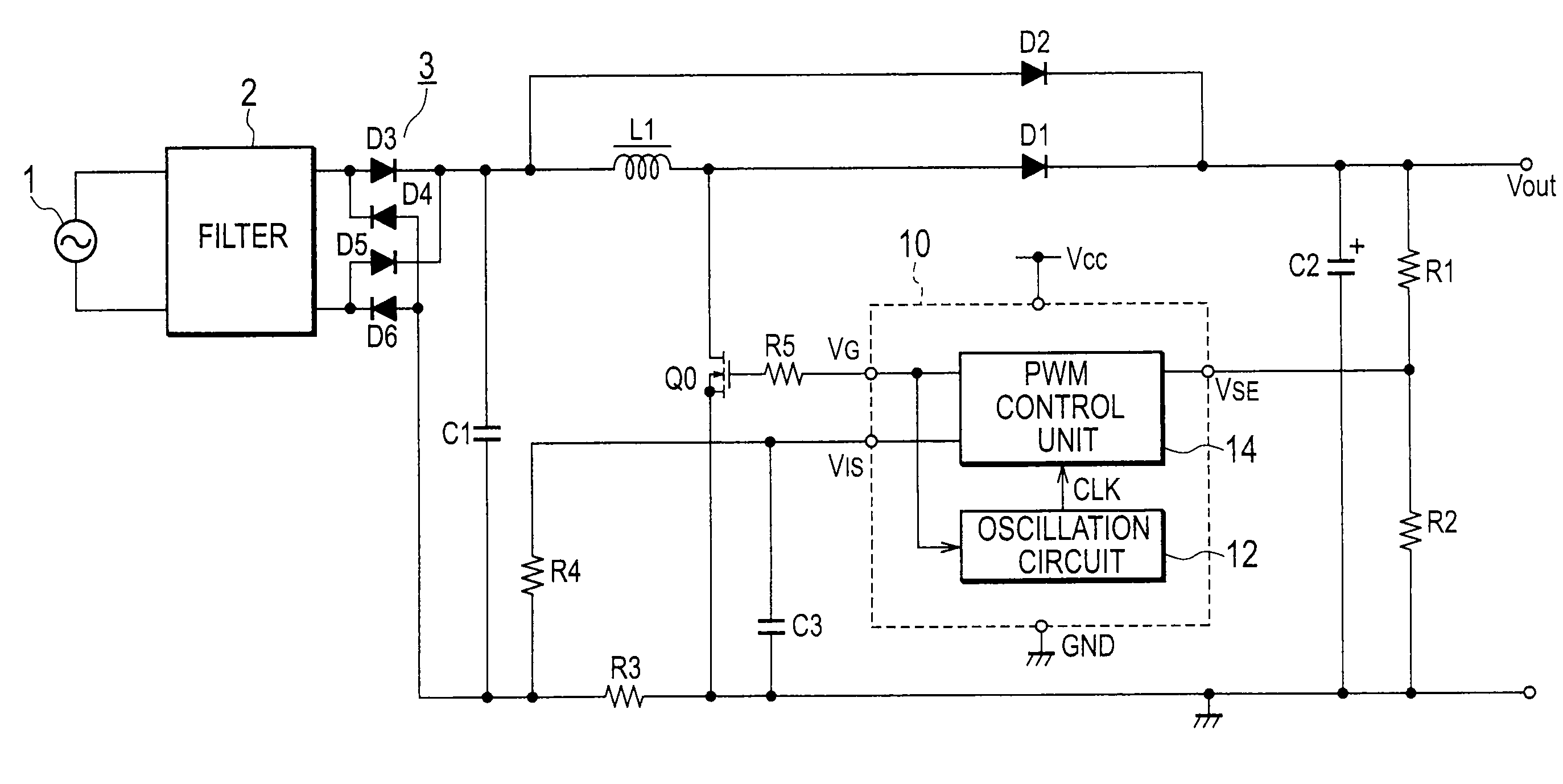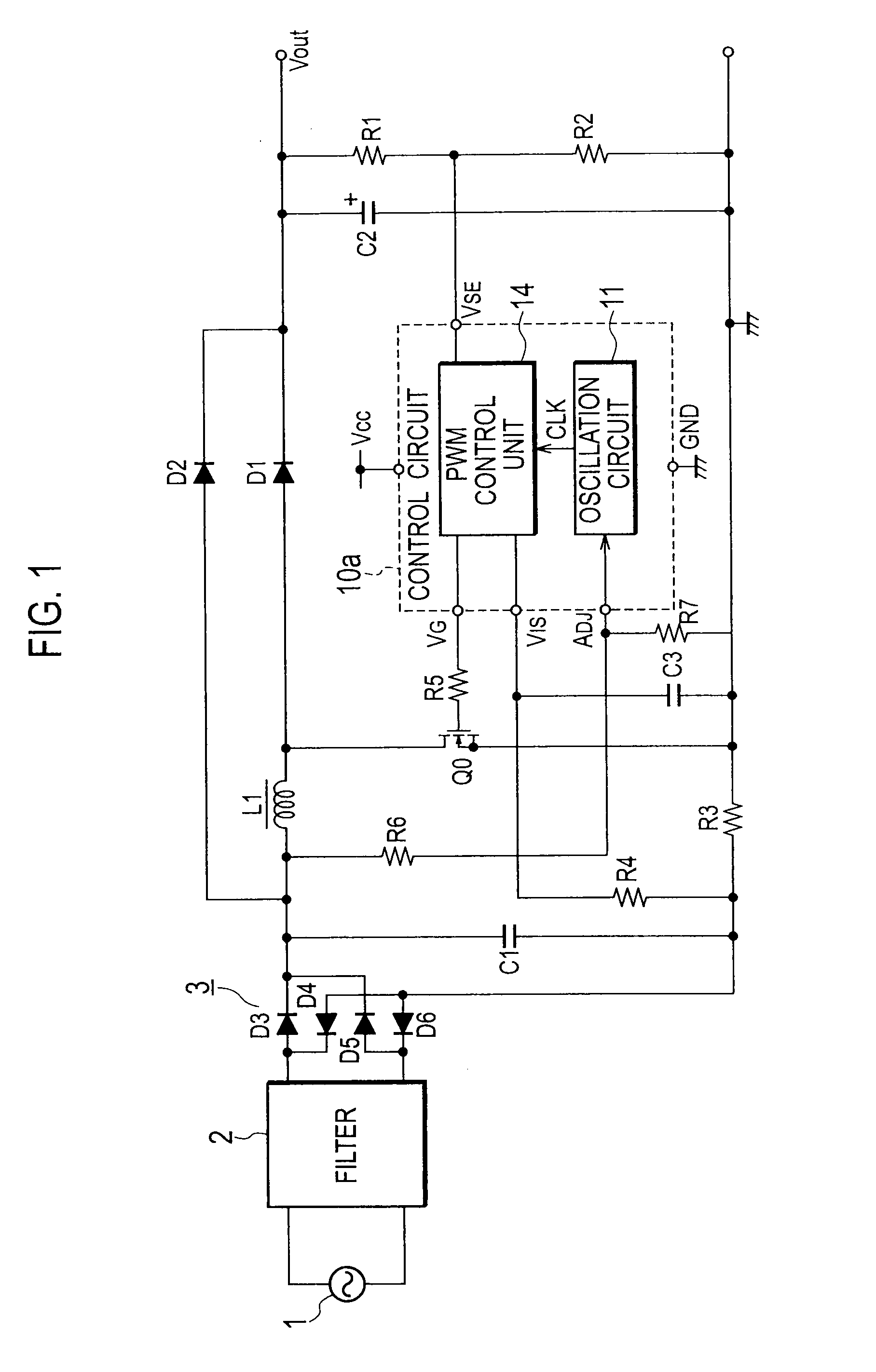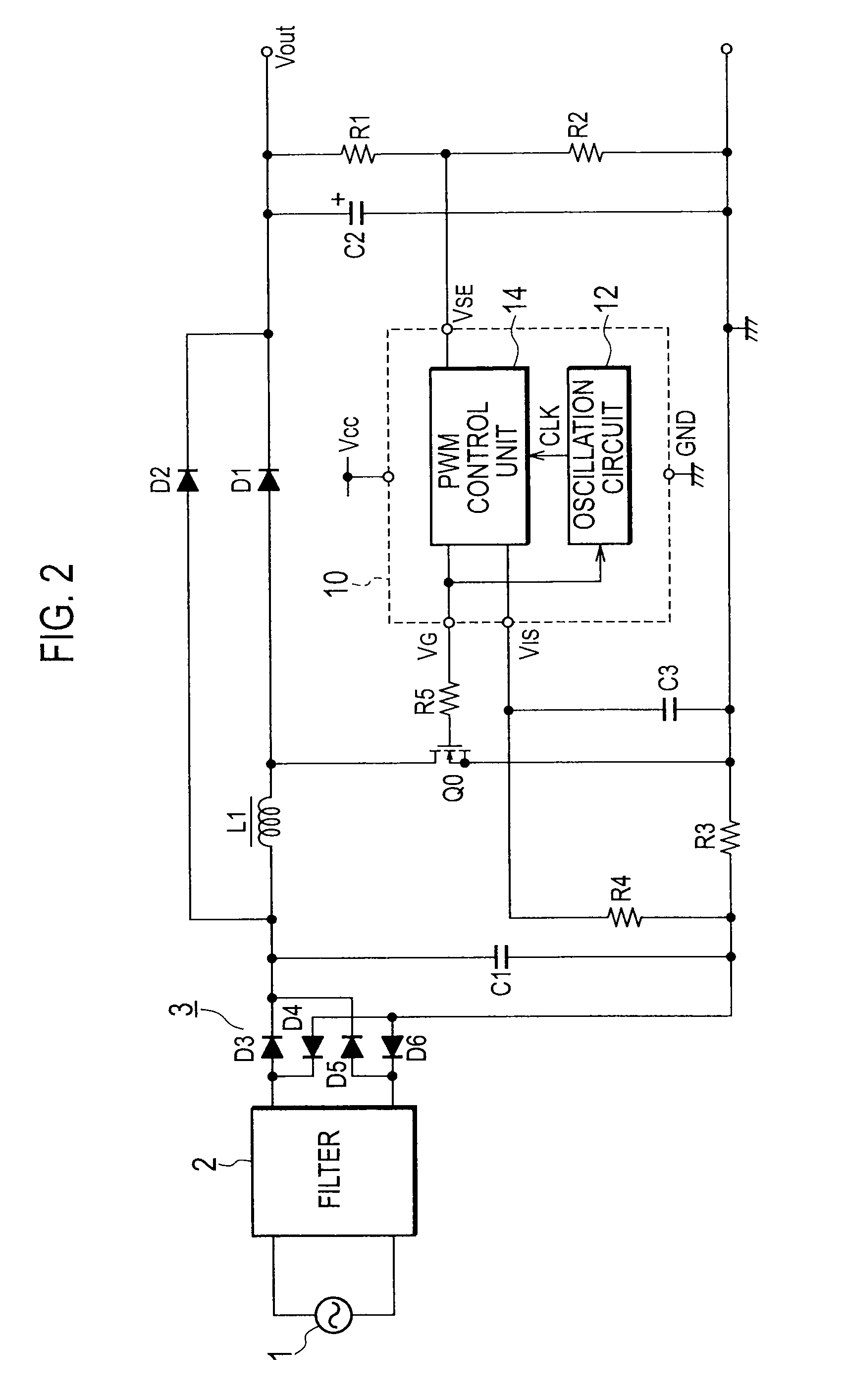Power factor correction circuit
a power factor and correction circuit technology, applied in power conversion systems, climate sustainability, energy industry, etc., can solve problems such as noise, deterioration of efficiency, and increase heat generation, and achieve the effects of simplifying structure, simplifying noise generation, and improving efficiency
- Summary
- Abstract
- Description
- Claims
- Application Information
AI Technical Summary
Benefits of technology
Problems solved by technology
Method used
Image
Examples
embodiment 1
[0028]FIG. 2 is a view illustrating the power factor correction circuit according to Embodiment 1 of the present invention. The power factor correction circuit of Embodiment 1 illustrated in FIG. 2 is characterized in that, compared with the power factor correction circuit of the related art illustrated in FIG. 1, the resistors R6 and R7 connected to the output of the full-wave rectifier 3 are omitted and an output terminal VG of a PWM control unit 14 and an oscillation circuit 12 are connected to each other.
[0029]The oscillation circuit 12 generates a clock signal having a predetermined oscillation frequency, receives a PWM signal for a switching element Q0 from the output terminal VG of the PWM control unit 14, and according to the PWM signal, changes the predetermined oscillation frequency of the clock signal.
[0030]The PWM control unit 14 generates, at a period of the clock signal generated by the oscillation circuit 12 and according to a voltage value of a smoothing capacitor C2...
embodiment 2
[0050]FIG. 5 is a view illustrating an oscillation circuit arranged in a power factor correction circuit according to Embodiment 2 of the present invention. The oscillation circuit 12a of Embodiment 2 is characterized in that a series circuit having an FET Q8 and a constant current source IADJ is connected in parallel with an FET Q1. The remaining configuration of the oscillation circuit 12a illustrated in FIG. 5 is the same as that of the oscillation circuit of Embodiment 1 illustrated in FIG. 3, and therefore, the same parts are represented with the same reference marks to omit the explanations thereof.
[0051]Like Embodiment 1, an FET Q3 provides a current equal to a current passing through the FET Q1, and this current charges an oscillation capacitor Cosc. When an FET Q4 is OFF, an FET Q6 provides a current that is larger than the current passing through the FET Q3 by a predetermined magnification ratio, to discharge the oscillation capacitor Cosc.
[0052]When the FET Q8 turns off, ...
embodiment 3
[0056]FIG. 7 is a view illustrating an oscillation circuit arranged in a power factor correction circuit according to Embodiment 3 of the present invention. The oscillation circuit 12b illustrated in FIG. 7 is characterized in that there are arranged an operational amplifier AM1, an FET Q10, and resistors R10 and R11 instead of the constant current sources Iosc and IADJ of the oscillation circuit 12 as illustrated in FIG. 3.
[0057]The drain of an FET Q1 is connected to the drain of the FET Q10, and the source of the FET Q10 is connected to an end of the resistor R10 and an inverting terminal (depicted by “−”) of the operational amplifier AM1. The other end of the resistor R10 is connected to an end of the resistor R11 and the drain of an FET Q8. The other ends of the resistor R11 and FET Q8 are grounded. A non-inverting terminal (depicted by “+”) of the operational amplifier AM1 is connected to a reference power source Vr and an output terminal of the operational amplifier AM1 is con...
PUM
 Login to View More
Login to View More Abstract
Description
Claims
Application Information
 Login to View More
Login to View More - R&D
- Intellectual Property
- Life Sciences
- Materials
- Tech Scout
- Unparalleled Data Quality
- Higher Quality Content
- 60% Fewer Hallucinations
Browse by: Latest US Patents, China's latest patents, Technical Efficacy Thesaurus, Application Domain, Technology Topic, Popular Technical Reports.
© 2025 PatSnap. All rights reserved.Legal|Privacy policy|Modern Slavery Act Transparency Statement|Sitemap|About US| Contact US: help@patsnap.com



